Classic Studies on Old Testament Theology (22 vols.)
Digital Logos Edition
Overview
This collection compiles classic studies on a variety of areas within Old Testament theology, providing contributions from skillful late nineteenth- and early twentieth-century scholars including Hermann Gunkel, E. W. Hengstenberg, and A. B. Davidson. Contributors expound on topics within Christology, angelology, the history of the Old Covenant, the use of Assyriology, and much more. Classic Studies on Old Testament Theology offers over eight thousand pages of interpretation, observations, translations, contextual history, and practical application. The 22 volumes have had an enduring impact on Old Testament scholarship, and this extensive collection provides easy access to that wealth of knowledge and analysis.
This collection is invaluable for students, scholars, pastors, historians, teachers of the Bible, and anyone else studying the Old Testament. With Logos, this collection is completely searchable, with passages of Scripture appearing on mouseover, as well as being linked to the original language texts and English translations in your library. These texts are more powerful and easier to access than ever before for scholarly work or personal Bible study. With the advanced features of Logos Bible Software, you can perform powerful searches by topic or Scripture reference—finding, every mention of “covenant,” for example, or “Genesis 3:15.”
Looking for more on the Old Testament? Check out the Studies on Isaiah collection.
Key Features
- Combines the perspectives of notable authors from a variety of backgrounds
- Offers over eight thousand pages of notable scholarship on Old Testament theology
- Details the history of the Old Covenant
- Includes an extensive Christology of the Old Testament
Product Details
- Title: Classic Studies on Old Testament Theology
- Volumes: 22
- Pages: 8,471
Individual Titles
- Theology of the Old Testament by Ch. Piepenbring
- Old Testament Theology, vol. 1 by Hermann Schultz
- Old Testament Theology, vol. 2 by Hermann Schultz
- Israel’s Ideal, Or Studies in Old Testament Theology by John Adams
- The Theology of the Old Testament by A. B. Davidson
- Christology of the Old Testament, vol. 1 by E. W. Hengstenberg
- Christology of the Old Testament, vol. 2 by E. W. Hengstenberg
- Christology of the Old Testament, vol. 3 by E. W. Hengstenberg
- Christology of the Old Testament, vol. 4 by E. W. Hengstenberg
- History of the Kingdom of God under the Old Testament, vol. 1 by E. W. Hengstenberg
- History of the Kingdom of God under the Old Testament, vol. 2 by E. W. Hengstenberg
- Assyriology: Its Use and Abuse in Old Testament Study by Francis Brown
- The Significance of the Old Testament for Modern Theology by James Lindsay
- The Theology of the Old Testament: A Biblical Sketch of the Religious Opinions of the Ancient Hebrews by Georg Lorenz Bauer
- Old Testament Theology or the History of the Hebrew Religion, vol. 1 by Archibald Duff
- Old Testament Theology or the History of the Hebrew Religion, vol. 2 by Archibald Duff
- Angelology of the Old Testament: A Study in Biblical Theology by William George Heidt
- History of the Old Covenant, vol. 1 by Johann Heinrich Kurtz
- History of the Old Covenant, vol. 2 by Johann Heinrich Kurtz
- History of the Old Covenant, vol. 3 by Johann Heinrich Kurtz
- What Remains of the Old Testament and Other Essays by Hermann Gunkel
- Vorlesungen über die Theologie des Alten Testaments by Heinrich Andreas Christoph Havernick

In this volume, Ch. Piepenbring uses exegetical and historical methods to show the historical development of specific topics such as the priesthood, religious festivals, religious rites, the manifestation of God in the world, the dignity of man, and much more. Stating that he would not “confine ourselves to the canonical books alone; we shall take into consideration the principle apocryphal books, but only so far as the teaching that they contain is found to develop or supplement that of the canonical literature.” The work is divided into three sections, based on time period. First is the section covering from Moses to the beginning of the eighth century; the second covers from the appearance of the oldest prophetical books to the end of the Exile; and the third covers from the Exile to the first century BC.
Ch. Piepenbring was pastor and president of the Reformed Consistory at Strasbourg.
H. G. Mitchell was a professor at Boston University.

In this volume, Hermann Schultz offers a “really historical knowledge of that religion from which our own faith has sprung,” in discussing “the religion of revelation in its pre-Christian stage of development.” In this first volume, Schultz offers a helpful introduction which discusses the meaning and method of biblical theology, forms of literature in the Old Testament, the religion of the Old Testament in connection with the history of religion. He then devotes the rest of this volume to discussing “the development of religion and morals in Israel down to the founding of the Asmonaenan State.” He explores time periods such as “Israel’s Mosaic Age,” “The Babylonian Age,” and “The Assyrian Age,” as well as significant figures like Moses, and other topics like “The Sacred Institutions of Israel According to ‘the Law,’” and “Special Phenomena of the Latest Old Testament Age Which Point Forward.”
Hermann Schultz was professor of theology at the University of Gottingen.
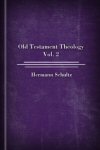
In this second volume of Herman Schultz’s historical study of Old Testament theology, he focuses on “Israel’s consciousness of salvation and religious view of the world, the product of the religious history of the people.” Schultz divides this volume into three main sections: the consciousness of salvation, the religious view of the world, and the hope of the prophetic period. He discusses the Old Testament Doctrine of Atonement, the spiritual personal God of Israel, revelation and names of God, man, the divine advent and the Day of the Lord, the Davidic Kingdom in the last age, and much more. Schultz also includes an index of subjects, of texts, and of Hebrew words and phrases in this volume.

In this volume, John Adams presents a collection of studies in Old Testament theology, written in a clear, straightforward style. He begins the text with an introduction covering “the principle of growth in the Old Testament” and the notion of “Israel’s Ideal.” The rest of his work is divided into chapters discussing Israel’s ancestral home, Jehovah, Old Testament sacrifice, God’s covenant with Israel, prophecy, the messianic fulfilment, Old Testament contribution to Christology, and more. He also discusses the Old Testament doctrines of the Spirit, of sin, and of salvation. This volume provides a valuably succinct and readable overview of a variety of areas of Old Testament theology.
John Adams was a reverend, as well as the author of Sermons in Syntax, Sermons in Accents, and other works.
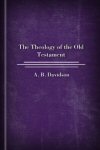
In this volume A. B. Davidson gives a thorough, detailed, and comprehensive introduction to Old Testament theology. Writing with diligent attention to detail, he begins his work by explaining the idea of Old Testament theology, as well as its definitions and characteristics, and other factors including literary and historical criticism, in a chapter on “the science of Old Testament theology.” He then proceeds to divide his work into discussions of several basic doctrines, examining each in turn, with careful consideration of issues within these doctrines. He covers the doctrine of God, of the spirit, of man, of sin, of redemption, of the messianic idea, of immortality, and more.
A. B. Davidson was professor of Hebrew and Old Testament exegesis at New College, Edinburgh.
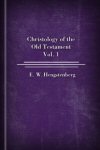
In this volume, German scholar E. W. Hengstenberg, presents the first part of his extensive study on the Christology of the Old Testament. He discusses messianic prophecies in the Pentateuch, messianic psalms, and messianic predictions in the prophets Hosea, Joel, Amos, Obadiah, Jonah, and Micah. He also examines the history of interpretation among the Jews and among the Christians.
E. W. Hengstenberg (1802–1869) was educated at the University of Bonn before becoming professor of theological philosophy at the University of Berlin. In 1827, Hengstenberg became the editor of Evangelische Kirckenzeitung, a German Journal intent on defending the Christian faith. He was a prolific author, writing numerous books and articles including The Prophecies of the Prophet Ezekiel Elucidated, Commentary on Ecclesiastes, and a two part commentary on Revelation, among other titles.

In this second volume of E. W. Hengstenberg’s Christology of the Old Testament, he devotes much time to discussing messianic predictions in Isaiah, “the principal prophetical figure in the first period of canonical prophetism” as well as in Jeremiah, “[the principal prophetic figure] in the second [period], the Babylonian.” He also examines messianic predictions in Zephaniah.

In the third volume of E. W. Hengstenberg’s Christology of the Old Testament, he carefully examines the messianic predictions in Ezekiel, Daniel, Haggai, and the first part of Zechariah, giving introduction to each of the prophets and explaining each of these predictions as they occur throughout these books. He gives special attention to the book of Daniel, offering specific analysis of phrases such as “and to seal up sins,” “and to bring everlasting righteousness,” “from the going forth of the word.”
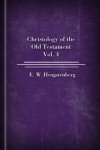
In the final volume of his massive Christology of the Old Testament, E. W. Hengstenberg examines messianic predictions in the second part of Zechariah—beginning with chapter 11—and finishes with those in Malachi. Hengstenberg then discusses the prophecies of Malachi in conjunction with the New Testament. He also includes six appendixes discussing the importance of messianic prophecies, messianic expectations among the heathen, the divinity of the Messiah in the Old Testament, the suffering and atoning Christ in the Old Testament, the history of the interpretation of the messianic prophecies, and the nature of prophecy.
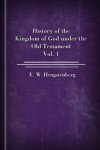
In this volume, E. W. Hengstenberg begins his two-volume study of the history of the Kingdom of God in the Old Testament. In a helpful introduction, Hengstenberg discusses the “nature, extent, name, division, import, and method of treating the history of the Old Testament.” He also presents the sources of and aids Old Testament history from which he drew in crafting this work. He divides this history in two major parts: the history of the “kingdom of nature”, and the “history of the kingdom of grace,” explaining how they are distinct by the “different relation in which God stands to the world since the fall.” Hengstenberg divides his history into two periods: the period from Abraham to Moses, and the period of the Law, from Moses to the birth of Christ. The first volume contains his discussion of the first period, where he examines the histories of figures such as Abraham, Isaac, Jacob, and Joseph. He also provides discussion of remarks on government, manners, culture, as well as religious knowledge and external worship of the Patriarchs. This first volume also contains the first part of discussion on the second period, where he examines the histories of Moses and Joshua.

This volume continues E. W. Hengstenberg’s two-volume study of the history of the Kingdom of God in the Old Testament. Hengstenberg finishes his examination of the second period: the period of the Law, from Moses to the birth of Christ. He discusses the period from Joshua’s death to the election of Saul, the period from the establishment of royalty to the division of the kingdom, and the period from the division of the kingdom to the Babylonian captivity. Hengstenberg finishes his history with a chapter discussion “Jewish history from the captivity to the destruction of Jerusalem.”
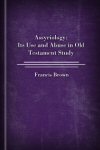
This volume presents the text of an address given by Union Theological Seminary professor Francis Brown in 1884. Brown discusses the use of Assyriology—“scientific investigation of the history, literature, and art of the Babylonians and Assyrians, as these have been revealed through excavation on the sites of their ancient cities”—in Old Testament studies. Brown draws on his years of study offer a “survey [of] the great subject of Assyrian discovery” saying “Assyriology has its guesses, and it has its accurate knowledge. It has felt the benefit of rigid critical examination at some points, and has suffered, at others for lack of it. In some directions it has borne rich fruit for the Old Testament exegete, but has been allowed to do harm in others.”
Francis Brown (1849–1916) was educated Dartmouth and Union Theological Seminary. He was Davenport Professor of Hebrew and the Cognate Languages at Union Theological Seminary.
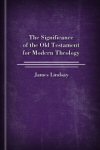
The text of this brief work came from a paper prepared for the Glasgow University Oriental Society, and presented in 1896. Scholar and minister James Lindsay examines the importance of the Old Testament in the theology of his day, surveying other scholars’ positions on the subject, as well as offering his own argument for the significance of the Old Testament in the development theology of the nineteenth century.
James Lindsay was a corresponding member of the Royal Academy of Sciences, Letters, and Arts of Padua. He was also minister of St. Andrew’s Parish Church, Kilmarnock.

In this volume Georg Lorenz Bauer offers a helpful overview of the theology of the Old Testament by examining the views of the ancient Hebrews, and their opinions regarding religion. Bauer states that he intends his work to “examine what were the opinions entertained concerning these relations of God to man, and of man to his Maker, by the Ancient Hebrews.” He seeks to provide “an impartial investigation of their ideas of God, and their notions of his Providence: to trace the history of their religion, as it is to be collected from the Books of the sacred writers, through each successive stage of its development. We shall thus attempt to give a brief sketch of the theological doctrines and representations contained in the Old Testament.”
Georg Lorenz Bauer was professor of Oriental languages and logic at Altdorf, and professor of Oriental languages and biblical criticism at Heidelberg.
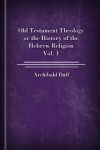
This volume begins Archibald Duff’s two-volume study on the history of ancient Hebrew beliefs. Duff states that he attempts “to write the history of Hebrew beliefs from the year 800 BC, as these are preserved for us in the Old Testament, to delineate the personality of each contributor to them, and to estimate the place of each in the onward movement.” In this volume, he covers a period of nearly two centuries, from 800 to 640 BC, or from Amos to Josiah. He opens this work with introductory studies on the Pentateuch, then proceeds discusses the religion of Amos, Hosea, Isaiah, and Josiah.
Archibald Duff (1845–1934) was a professor of Hebrew and Old Testament theology at the Congregational United College in Bradford, England. His other works include History of Old Testament Criticism, The Theology and Ethics of the Hebrews, Old Testament Theology, and On the History of the Idea of Atonement among the Hebrews from the Time of Amos to the Liberation by Cyrus from the Babylonian Exile.
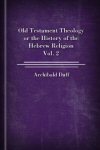
This volume concludes Archibald Duff’s two-volume study on the history of ancient Hebrew beliefs. Volume two of Duff’s study covers the Deutoronomic Reformation of the seventh century BC. Duff begins the work by introducing “the times and the events” from 700–600 BC, including a helpful chronological outline. He then discusses the occasion of the Reformation as seen in Nahum and Zephaniah, and the people of this reformation. He also examines topics such as the religious ideas of the Iahweh writer and of the Elohistic narrator.
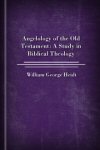
In this volume twentieth-century Roman Catholic scholar William George Heidt offers a study of angelology in the Old Testament. Heidt adhered to the finite angel representative theory, which views angels as official representatives of God, empowered to speak for him and receive worship on his behalf.
William George Heidt (1913–2000) was a Roman Catholic theologian. He was ordained in 1940, and earned the Licentiate in Oriental language and a doctorate in sacred theology. He was a professor for many years, and served as the director of the Liturgical Press of St. John’s Abbey.
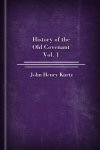
This volume contains the first part of Johann Heinrich Kurtz’s three-volume History of the Old Covenant. Kurtz provides a sweeping and thorough expository overview of the Old Testament. He begins this first volume with “The Bible and Astronomy,” a work in which he “endeavours to harmonize the biblical account of creation and of man with the results of astronomy and geology.” He then proceeds to introduce the Old Covenant and offer its preparatory history, discussing such issues as its meaning, purpose, and goal. Kurtz then details the “first stage of the covenant history of the family,” where he discusses the histories of Abraham, Isaac, and Jacob.
Johann Heinrich Kurtz (1809–1890), also known as Johann Heinrich Kurtz, was a Lutheran theologian, and was educated the University of Halle and Bonn. In 1835, he became a religious instructor at the school of Mitau and a professor of theology at the Protestant University of Dorpat. He is the author of a number of author works including Church History and Manual of Sacred History.
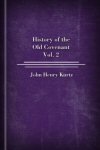
This volume contains the second part of Johann Heinrich Kurtz’s three-volume History of the Old Covenant. Kurtz provides a sweeping and thorough expository overview of the Old Testament. In this volume, Kurtz begins with “the third stage in the history of the family,” and concludes his discussion of Jacob. He then offers a general survey of the Patriarchal Age, before beginning his discussion of the “second stage in the history of the Covenant.” He examines Israel’s institutions in the time of Moses and moves to discussion of the “first step towards the development of the nation,” covering the period of Israel’s sojourn in Egypt.
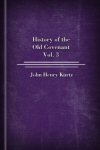
This volume contains the final part of Johann Heinrich Kurtz’s three-volume History of the Old Covenant. Kurtz provides a sweeping and thorough expository overview of the Old Testament. In this volume, Kurtz begins this volume with discussing “the second step towards the development of the nation,” in “the giving of the Law.” He devotes the rest of the work to examining the historical groundwork and circumstances connected with the giving of the Law, dividing his study into three major sections: “Israel in the Desert of Sinai,” “Israel in the Desert of Paran,” and “Israel in the Arboth Moab.”
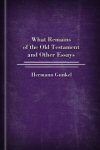
This volume contains a collection of German scholar Hermann Gunkel’s accessible yet thorough essays, on highly pertinent matters of Old Testament study. Including a preface by acclaimed twentieth-century writer, translator, and commentator James Moffatt, this volume features the apologetic “What Remains of the Old Testament,” as well as “Fundamental Problems of Hebrew Literary History,” “The Religion of the Psalms,” “The Close of Micah,” and “Jacob.”
Hermann Gunkel (1862–1932) was professor of Old Testament Theology at the University of Berlin in the early twentieth century. He was famous for form criticism and his study of oral tradition. He also wrote The History of Religion, The Influence of the Holy Spirit, and An Introduction to the Psalms.
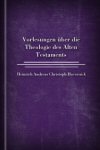
This volume contains the original German-language text of one of Heinrich Andreas Christoph Havernick’s most important works. Including a foreward written by Hermann Schultz, this text compiles significant lectures on the theology of the Old Testament.
Heinrich Andreas Christoph Havernick (1811–1845) was born in Kröpelin, Germany and educated at Leipzig, Halle, and Berlin. At the University of Berlin he adopted the theological views of E. W. Hengstenberg, and defended traditional views concerning origin of Old Testament books. He taught at Geneva, Rostock, and in 1841 became the chair of theology at Königsberg. He was a prolific writer, and his other significant works include Kommentar über das Buch Daniel, Handbuch der historisch-kritischen Einleitung in das Alte Testament, Lucubrationes criticœ ad apocalypsin spectantes, and Kommentar über den Propheten Ezechiel.